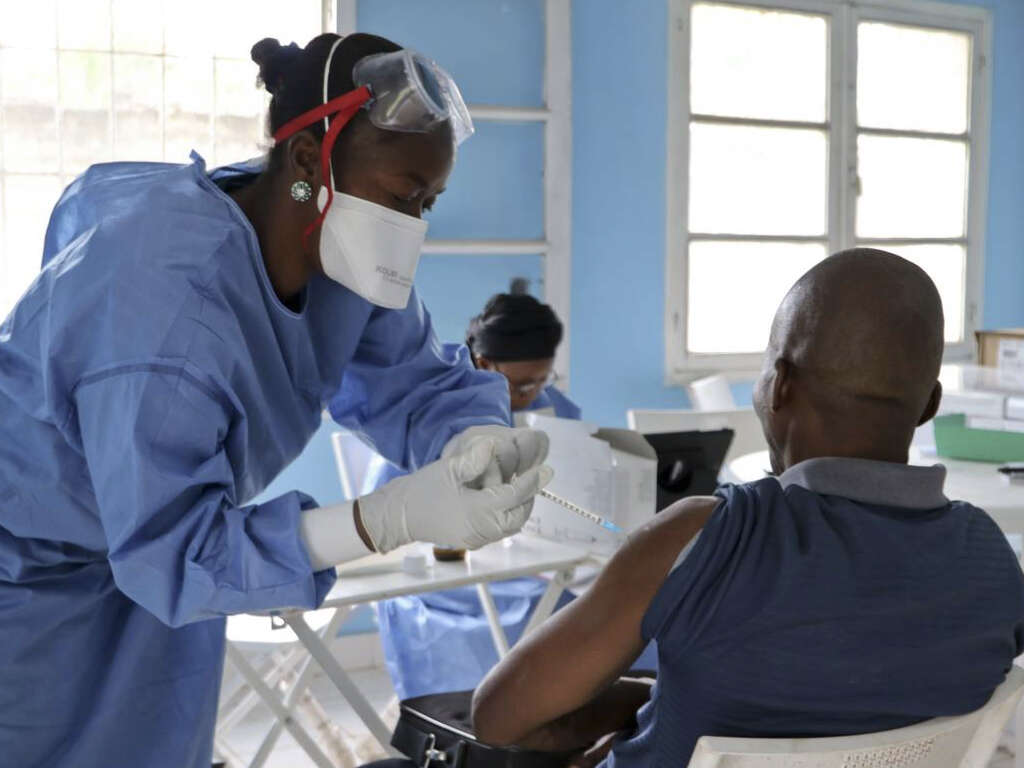10 Fever Symptoms
 Article Sources
Article Sources
- 1. ’Fever.’ Mayo Clinic, Mayo Foundation for Medical Education and Research, 13 May 2020, www.mayoclinic.org/diseases-conditions/fever/symptoms-causes/syc-20352759
- 2. 'Chills: Causes & Treatment.' Cleveland Clinic, my.clevelandclinic.org/health/symptoms/21476-chills
- 3. 'Dehydration.' Mayo Clinic, Mayo Foundation for Medical Education and Research, 19 Sept. 2019, www.mayoclinic.org/diseases-conditions/dehydration/symptoms-causes/syc-20354086
- 4. Leung, Alexander Kc, et al. 'Febrile Seizures: an Overview.' Drugs in Context, BioExcel Publishing Ltd, 16 July 2018, www.ncbi.nlm.nih.gov/pmc/articles/PMC6052913/
A fever occurs when the body's core temperature is elevated above its normal range due to a medical condition or illness. Fevers are commonly caused by a viral or bacterial infection, where the body's natural response is to increase its temperature to kill the microbes.
A fever can cause an individual to feel unwell and bring with it a host of other symptoms. Although mild fevers usually go away on their own after a few days, some medications can help lower fevers sooner or alleviate uncomfortable symptoms. Drinking plenty of fluids, getting enough rest and wearing lightweight clothing may also help speed up recovery.1’Fever.’ Mayo Clinic, Mayo Foundation for Medical Education and Research, 13 May 2020, www.mayoclinic.org/diseases-conditions/fever/symptoms-causes/syc-20352759
Higher Than Normal Body Temperature
The hallmark symptom of fever is a high body temperature. The average normal body temperature is 98.6 degrees, however, this can vary between individuals. A temperature within the range of 97 to 99 degrees is generally considered normal. Typically, adults don't need to be concerned unless their temperature reaches 103 degrees or higher. However, when a baby or child has a higher-than-normal temperature, it may be a sign of a more severe infection.
Different types of thermometers can be used to take a person's temperature, such as oral, rectal, ear and forehead thermometers.1’Fever.’ Mayo Clinic, Mayo Foundation for Medical Education and Research, 13 May 2020, www.mayoclinic.org/diseases-conditions/fever/symptoms-causes/syc-20352759
Increased Sweating
Because fevers cause an increase in body temperature, a common symptom is also sweating. The body activates its sweat glands in an attempt to cool itself down naturally. Night sweats, which are episodes of excessive nighttime sweating that may leave bedding and pajamas drenched, also tend to occur during a fever.
A period of sweating may be a sign that the fever is breaking, and the body is almost back to normal.

Chills
Sometimes a fever may cause a person to get chills, even though their body temperature is higher than normal. Chills are commonly described as episodes of shivering, shaking, chattering teeth or goosebumps.
Chills are involuntary and caused by the body relaxing and contracting its muscles in an attempt to produce heat. They're a common sign that the body is trying to regulate its temperature or fight off an illness or infection.2‘Chills: Causes & Treatment.’ Cleveland Clinic, my.clevelandclinic.org/health/symptoms/21476-chills
Headache and Migraine
A person may experience headache as a symptom of a fever. Headaches can cause mild to severe pain or discomfort in the head, neck and shoulder areas. Poor sleep and dehydration can worsen headaches, so it's important to stay hydrated and get lots of rest when fighting a fever.
Taking painkillers, such as ibuprofen or acetaminophen, may help ease the discomfort of a headache. Fevers may also trigger migraine headaches in people predisposed to them.

Muscle Aches
Muscle aches, also known as myalgia, can accompany fevers. Instead of localized pain, muscle soreness associated with fevers tends to be systemic pain throughout the whole body. Muscles may feel tender to the touch or tight and achy. The discomfort caused by these body aches can range from mild to severe.
Dehydration, another symptom of fever, can also cause muscle aches, so staying hydrated is important to combat aches and pains.
Loss of Appetite
A loss of appetite can accompany a fever. As the body tries to fight the infection or illness, it may suppress the appetite to conserve energy for the healing process. People experiencing a decreased appetite have a reduced desire to eat and the idea of eating may cause nausea.
Although the old adage says feed a cold, starve a fever, people should ensure they are getting sufficient calories and nutrients to recover properly.

Irritability
A fever can create discomfort and lead to irritability, which is a feeling of agitation or annoyance. It can cause a person to be more sensitive to stressful situations and easily bothered or frustrated by small things.
The discomfort brought on by other manifestations of fever, such as fatigue or headache, can give rise to irritability. Managing these other symptoms and getting plenty of rest may help curb the tension that causes irritability.
Dehydration
Dehydration commonly accompanies fevers. When the body loses more fluids through sweating than are being replenished, and it doesn't have enough water to carry out normal functions, it's at risk of becoming dehydrated. Generally, the higher the fever, the more dehydrated an individual can become.3‘Dehydration.’ Mayo Clinic, Mayo Foundation for Medical Education and Research, 19 Sept. 2019, www.mayoclinic.org/diseases-conditions/dehydration/symptoms-causes/syc-20354086
A person with a fever is especially at risk of dehydration if the fever is accompanied by excessive sweating. Headaches, fatigue and thirst are common indications of dehydration. People with a fever should drink sufficient fluids and electrolyte replacements.

Fatigue and General Weakness
People with a fever commonly experience fatigue and general weakness. Fatigue occurs when a person is in a constant state of tiredness, regardless of how much sleep they get. The sudden onset of fatigue can be an early warning sign of a fever.
General weakness usually presents itself along with fatigue. Completing basic tasks can feel more difficult when the body feels excessive tiredness. Getting plenty of rest and avoiding overexertion is important to allow the body to heal quickly.
Febrile Seizures
High fevers may bring on febrile seizures in children six months to five years in age. These seizures affect 2-5 percent of children in this age group. Of those who've had one febrile seizure, approximately one-third may have another one within the following year.1’Fever.’ Mayo Clinic, Mayo Foundation for Medical Education and Research, 13 May 2020, www.mayoclinic.org/diseases-conditions/fever/symptoms-causes/syc-20352759
The seizure is caused by how quickly the child's temperature rises, not by the high temperature itself. Although simple febrile seizures are usually benign, children experiencing complex febrile seizures can be at a greater risk of developing epilepsy.4Leung, Alexander Kc, et al. ‘Febrile Seizures: an Overview.’ Drugs in Context, BioExcel Publishing Ltd, 16 July 2018, www.ncbi.nlm.nih.gov/pmc/articles/PMC6052913/










